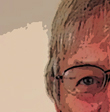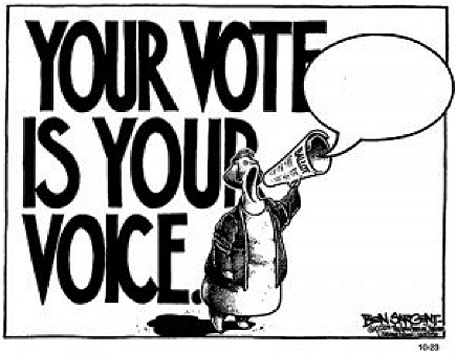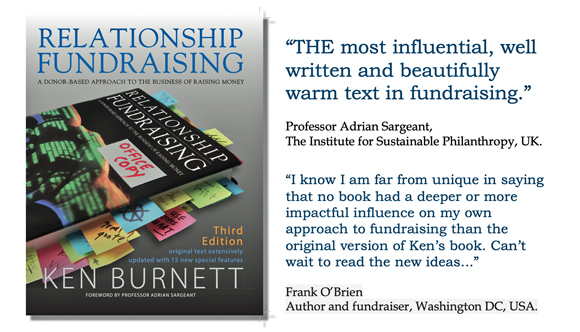|
Blog 4th February 2013
A big meeting, it cost tens of thousands of pounds to organise and convene. But the real cost must have been many times that in staff time, not to mention confusion, squandered goodwill and the further polarising and alienation of
The majority Home page.
|
Indeed, charities and the causes they serve pay heavily when in their structures and systems they fail to clearly define the different roles of management and governance, thereby allowing those appointed to govern to instead dabble in management. This tablet of stone was forcefully underscored at my first ever Extraordinary General Meeting, held recently by a large and influential INGO, of which I’m a voting member. Because I love the organisation I won’t name them, though that love was sorely tested by the cost, purpose and outcome of this truly extraordinary meeting. Don’t get me wrong, the occasion had some positives, was interesting, well-run, brilliantly chaired and generally good-natured. But it was also expensive, pointless and ultimately hugely destructive. It was a big meeting, held in a major central London conference hall. It cost tens of thousands of pounds to organise and convene but the real cost must have been many times that in staff time, not to mention confusion, squandered goodwill and the further polarising and alienation of a once great and united organisation’s keenest supporters. The meeting, many claimed, was a reassuring example of democracy in action. In that, perhaps, it had the veneer of merit, but I fear this was merely a mirage. It reminded me of why so many organisations I worked with in the 80s and 90s so strongly resisted going down the ‘democratic membership’ road. However enthusiastic and well intentioned it is, a partially-informed, unqualified membership is rarely able to make balanced and helpful decisions on issues of detail for a large, complex enterprise negotiating difficult changes in turbulent times. Nonprofits with voting memberships who imagine their members can or should decide such detail risk paying a heavy price for this illusion of true democracy. (Perhaps the UK prime minister might mull this over before promising national referenda on complex and multi-faceted issues with both negative and positive implications. But that’s another story.) The votes of ordinary supporters should endorse rather than determine executive tactics and then are practical only on straightforward issues. This wasn’t that. To coin a clumsy metaphor, it seemed this once fleet-footed INGO had filled its boots with water. In essence here was an organisation facing great change with a new leadership tasked to bring about a significant shift that the organisation had already signed up to both nationally and internationally. But the detail of change can mean sacrifices as well as gains as a new structure is steered through and some of the consequences were proving very painful for a minority of staff and members. Though nationally membership runs to hundreds of thousands their constitution allows just 100 members to call an EGM before which they can place a raft of resolutions. The passive majority avoid or are indifferent to such devices, of course, while the dedicated activist or the self-interested can have a field day. The latter can easily muster enough votes to block or bind the board and management to resolutions on, well, just about anything as long as it’s approved by 75 per cent of those who vote. It doesn’t take many. In this case, less than 2,000 votes sufficed to upset management’s carefully laid plans – fewer than one per cent of total membership. It’s hardly democracy or justice when such a minority of the electorate can gain sway. The vocal, active and disaffected benefit from this kind of mechanism. The passive majority only bears the consequences. The acid test is, did this expensive circus deliver any value for the board, management and the people that the organisation and its supporters so passionately wish to help? I think the reverse. Its seven resolutions were so turgidly-worded, apparently necessarily so for legal purposes, that most people reading them were either confused or deterred. Confusion as to the implications behind the resolutions was evident as speaker after speaker confirmed their general support for the direction proposed by board and management, then went on to condemn the method and urge the meeting to overturn management’s plans. Evidently both board and management should have communicated more effectively, been more accountable and transparent. Confidence lost needed to be regained and rebuilt. These participants, all theoretically on the same side with the same ultimate aspirations, were being rent apart by a failure each to understand the other. Management should be obliged to correct that; instead their supposedly democratic system offered the illusion of a solution. What they got is much worse. Speaker after speaker confirmed what had quickly become evident, that most in the meeting – a component of the organisation’s governance structure – failed to appreciate the essential difference between governance and management. One after the other, speakers trotted out suggestions or objections insisting what management must do, usually preceded with phrases such as, ‘Of course I’m behind the direction of change, but…’ and, ‘ I have no desire to micro-manage, but…’, then went on to micro-manage or block change, making demands about how money should be spent, salary levels, who should be employed, who shouldn’t and so on. Is this good governance? I fear not. It’s thoughtless micro-management. It’s doubly sad as, in this instance, the UK Board was fully united behind the change. So it’s not – as so often is the case – an example of the Board being unclear about their governance role. The governance system here broke down only because a narrow band of members were able to hijack the democratic process by showing up and voting. The most crucial distinction for any voluntary organisation to appreciate is that management must manage, the board supported by council must limit themselves to governance. The majority of failing or ineffective boards – and there are many –function badly because they fail to grasp the paramountcy of maintaining this crucial divide. Here’s what happened. Two of the resolutions were narrowly passed, two were supported anyway by both board and proposers and three were defeated. The result, confusion. The body of the movement (or rather, a sliver of it) had spoken, sure, but nobody had quite understood what it said. The cost, horrendous. The outcome, uncertainty. The result, a split organisation descending into chaos. I’m not saying it’s wrong to allow rank and file members a democratic say in how their organisation is run. Great communication, brilliant feedback, opportunities to engage and input, chances to speak, being listened to: all such dialogue serves to make an organisation strong. But once a direction is agreed management has to be free to manage the detail and the board has to be free to monitor, assess and pronounce on that though, crucially, not to do it for them. If management is inadequate in the job it’s appointed and paid to do the board must replace them. If the board is inadequate to its task the general assembly or another regulator should replace them. But once direction has been agreed no general assembly should be able to reach over or around the board to try to tie the hands of management or manipulate them from a distance. This will always end in chaos and destruction. Attempting to manage for the management invariably fails, expensively. As this meeting showed. © Ken Burnett 2013
|
Here’s what happened. Two of the resolutions
At the time of writing Ken Burnett is co-founder of Clayton Burnett Limited, a director of The White Lion Press Limited, a consultant to The Burnett Works agency and former UK director, director of fundraising and chairman of the board of trustees for the international development charity ActionAid. He’s author of several books including Relationship Fundraising and The Zen of Fundraising and is managing trustee of SOFII, The Showcase of Fundraising Innovation and Inspiration. Ken Burnett is author of Tiny Essentials of an Effective Volunteer Board, published in 2006 by The White Lion Press Limited.
|




